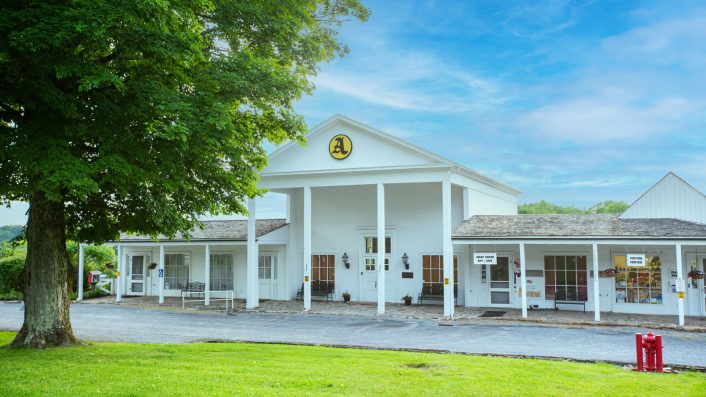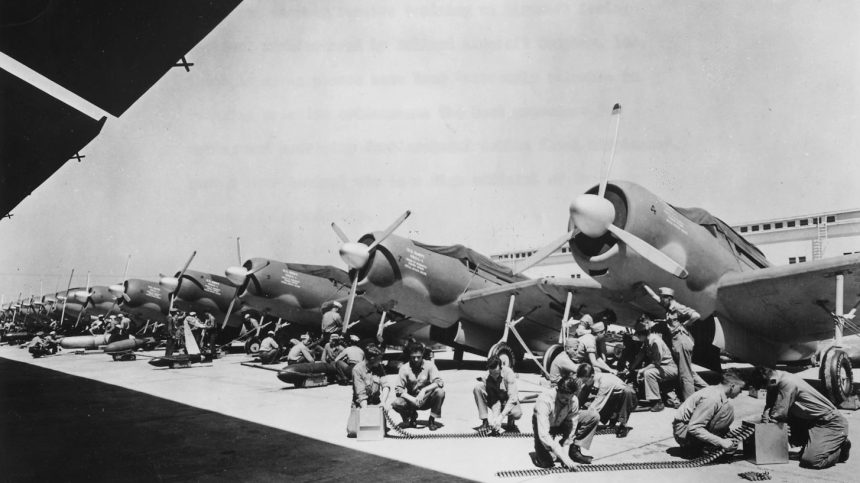Situated in the quiet hills of West Virginia, the small town of Arthurdale has a big story to tell.
When one thinks of naval aviation, the landlocked, mountainous state of West Virginia doesn’t usually come to mind. Even so, with the outbreak of the Second World War, the craftsmen of rural Arthurdale came together to train and supply America’s sailors and soldiers for war.
The story of Arthurdale begins in 1933 when First Lady Eleanor Roosevelt visited the mining town of Scotts Run, West Virginia. Appalled by the conditions and the stories told by residents, she went back to Washington with a new idea in mind – a self-sufficient, government-sponsored community (the first of 99 communities nationwide) to get these hardworking West Virginians on their feet. The new town, built on approximately 1,200 acres, was to be focused on farming rather than industry. The handful of factories in the town that operated over Arthurdale’s history never lasted longer than a year. However, when the United States was plunged into World War II in 1941, Arthurdale’s industry found new purpose.
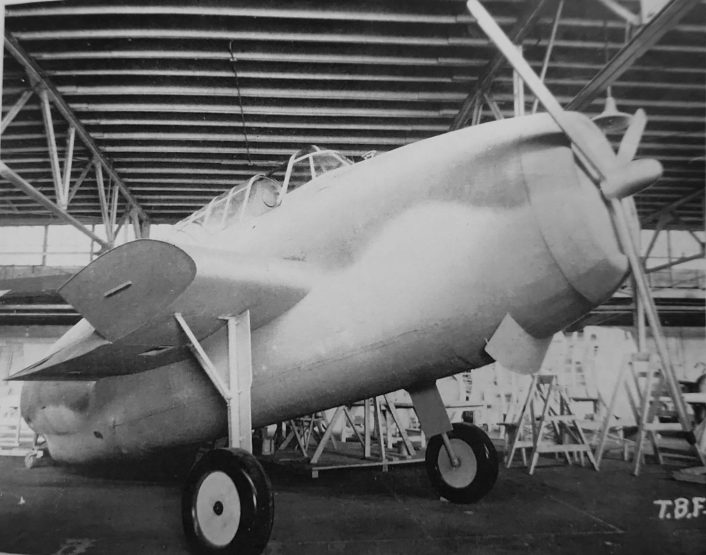
Prior to the war’s outbreak, Arthurdale’s peacetime manufacturing industry struggled to thrive. Industry including making vacuums, shirts, tractors, radios, and televisions all only lasted around a year each from 1936 to 1942. Arthurdale Heritage points out that the town’s remote location in rural Preston County, along with the economic hardships of the time, lead to the struggles of Arthurdale’s industry.
Two wartime companies brought life to Arthurdale’s industry. One of them, Ballard Aircraft, is known for producing two things for the United States government – full-scale wooden airplane mock-ups and target kites. Ballard opened their factory in town in 1943 and aimed to capitalize on U.S. government contracts in support of the war effort.
The mock-ups were the first to be produced. Ballard produced full-scale wooden ground trainers of the Grumman TBF Avenger torpedo bomber, Douglas SBD Dauntless dive bomber, and Curtiss SB2C Helldiver dive bomber. The models were used by Navy and Marine Corps maintenance crews especially as an introduction to the airplanes they’d be working on in active military service. Interestingly, these personnel traveled to the rural West Virginia town for their training. The practice of using ground trainers is something still done by American and other militaries’ maintenance and aircrew today. Even the term “wooden trainer” is still heard in the halls of formal training units, though usually just in reference to older training aids.
Ballard also built target kites beginning in February, 1944. The kites, designed by the future (and first) head of the Smithsonian Air and Space Museum, Paul Garber, were designed to train U.S. military warship crews and anti-aircraft gunners to shoot down attacking enemy airplanes. In the collection of the Arthurdale museum are two models of the kites. One is styled as a Nazi German Focke-Wulf Fw 190 and the other, on display in Arthurdale as seen below, is styled as an Imperial Japanese Mitsubishi A6M “Zero”. The town produced 75,000 of the kites in total. Unfortunately, due to the nature of the kites and the material used to produce them, relatively few survive in museum and private collections today.
The kites, designated Mark I, had a wingspan of five feet (1.5 meters) and featured a wooden frame and metal rudder. The kites were operated by a trained service member with a harness and a reel box and were capable of “looping, climbing, diving, and figure-eights” according to the National Air and Space Museum in Washington, D.C.
At one point, while underway in the Pacific, an American aircraft carrier was performing a training exercise using Mark I kites. During the exercise, the gunners spotted actual Japanese bombers and were able to quickly shoot them down. Some credit Garber’s kites with saving an aircraft carrier because of the incident.
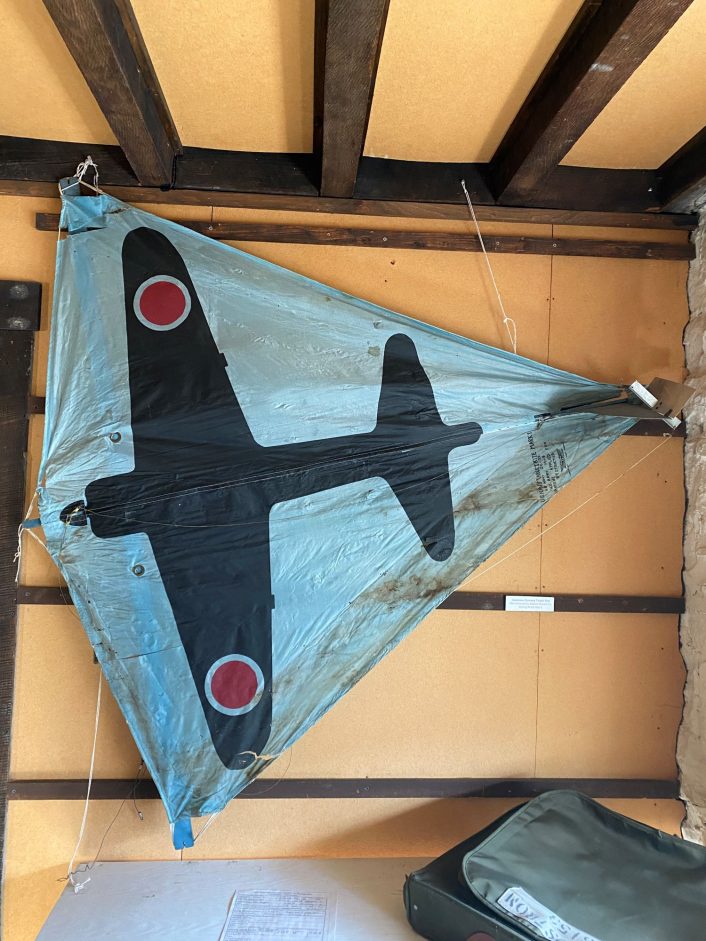
By March, 1944, Ballard also began to produce 75mm artillery fuses. Fuses built here were used in the Battles of Anzio, Monte Cassino, and Normandy. The company also manufactured the gunners’ seats in the Martin PBM Mariner flying boat.
Ballard was not the only wartime factory in town, however, with Silman Manufacturing producing portable radio transceivers, flares, and more. Silman had the honor of earning the prestigious Army-Navy “E” Award for excellence in production – an award earned by only 5% of the 85,000 companies that supplied the American war machine during World War II.
The town of Arthurdale also sent 121 enlistees and draftees to the war in all theaters, representing all branches of the U.S. military. Fortunately, no Arthurdale veterans were killed in action. Sadly, one veteran was killed in a car accident not long after returning home.
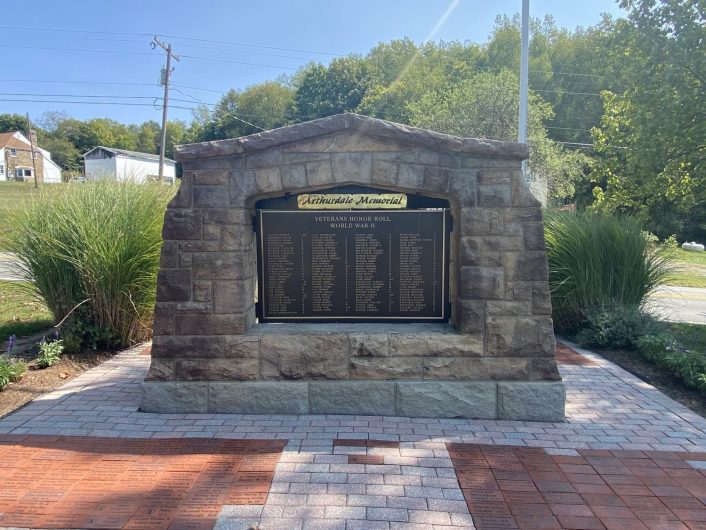
After the war, and under a new administration with President Harry Truman, the government ended its support of the Arthurdale community. All buildings in town were sold to private owners by 1947. The town’s community and administrative buildings sat empty and in ruin until a group of the former homesteaders founded Arthurdale Heritage Inc. in 1984 and concentrated efforts on restoration. “Eleanor’s Little Village” is open for tours of a museum building (with a Mark I target kite on display), a forge, a pair of original Co-Op tractors, and an original homestead. Also featured is the original Craft Store that now sells crafts made by local artisans. The museum also offers a free driving tour to see the rest of the surviving community that is still being lived in and worked on today.
The museum celebrated the town’s 90th anniversary this summer during the annual New Deal Festival.
